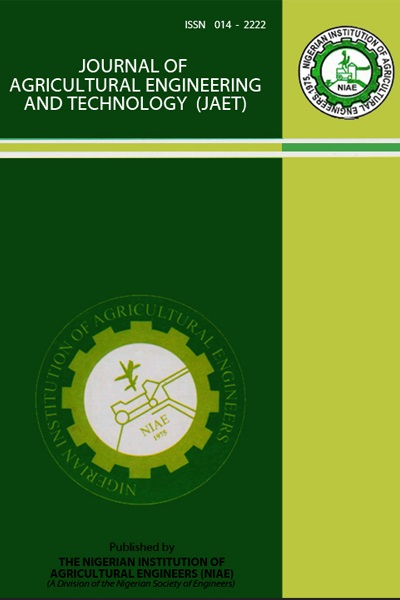DEVELOPMENT AND PERFORMANCE EVALUATION OF COCOA-BEANS ACTIVE SOLAR CABINET DRYER PRIMED WITH SOLAR CELLS
Keywords:
Cabinet dryer, cocoa-beans, thickness, solar energy, sun drying, efficiencyAbstract
Farmers in the rural areas commonly preserve biomaterials by open sun drying. However, this method is associated with problems mostly long drying period, low quality dried products, large drying area. Active direct mode solar cabinet dryer primed with solar cells was developed and tested with cocoa-beans. The cocoa bean samples were dried both in the solar dryer and in open sun drying at layer thickness of 40 mm. Purposive sampling technics and simple descriptive statistics were adopted in identifying the drying layer thickness farmers’ normally dry cocoa beans. Heat generation from the dryer was limited to solar energy availability. Solar radiation,
ambient relative humidity, wind speed and temperature were common environmental conditions, the drying samples were exposed to. The solar dryer raised the drying temperature from average ambient air temperature of 31.8 0C to average drying air temperature of 43.5°C. Result showed that 200 % drying time was saved when compared with open sun drying method. The analysis also, revealed that the drying efficiency of the solar active dryer was 55% while that of open sun drying was 18%. The drying rate of cocoa-beans samples dried in the solar dryer and open sun drying was 1.4x10-4 kg/s and 4.5 x 10-5 kg/s respectively. In conclusion, samples dried
with solar dryer showed a remarkable appearance, whereas, samples dried in open sun did not have appealing feature as it grew molds.


